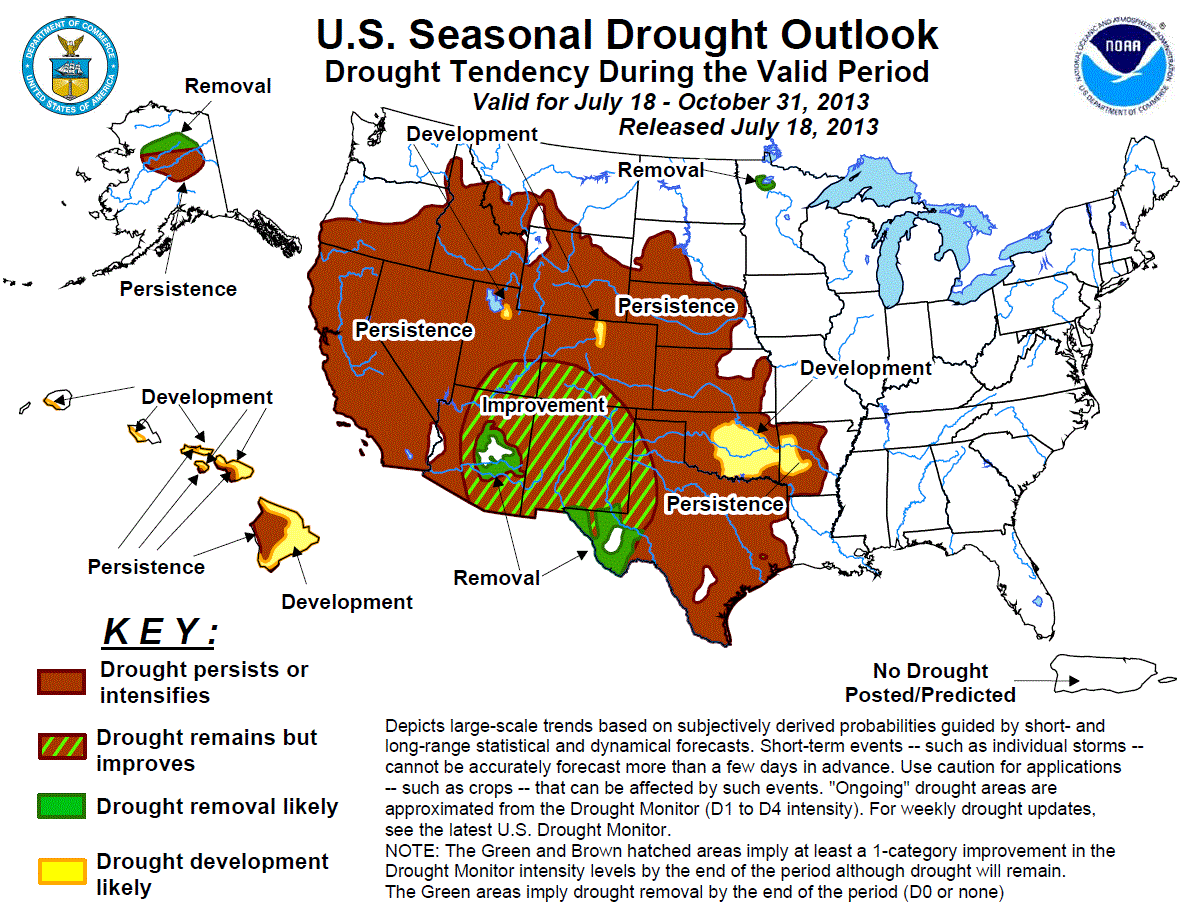Environment & Energy
Related: About this forumTroubling New U.S. Seasonal Drought Outlook (Thru 1/31/13)
Lotta brown on this map:

I realize the word "tendency" is used in the description, but why wouldn't ongoing and upcoming rains ease the drought in the "Persistence" areas?
If your state is in the brown area, please educate me. I'm amazed at how widespread an area will probably still be in drought as the New Year starts. ![]()
And look at those Hawaiian Islands -- wow!
Redlo Nosrep
(111 posts)Excerpt about Sandy's effects on the drought:
An extratropical transitioning Hurricane Sandy made landfall along the mid-Atlantic coastline, bringing devastating storm surge, strong winds, and widespread rainfall to the region. Areas of drought along the Delmarva and the Northeast were wiped out over a period of three days, while significant improvements were made to lingering drought regions in the Ohio Valley. As the remnants of Sandy continue to drift across the northeastern quadrant of the nation, further drought reduction is expected. During the week 2 period, a new storm system is forecast to develop across the Midwest and traverse the Ohio Valley and Northeast. Based on this short term wetness, continued drought improvement is expected for the small remaining drought areas of the mid-Atlantic and Ohio Valley. Forecast confidence for the mid-Atlantic and Ohio Valley is moderate to high.
http://www.bloomberg.com/news/2012-11-01/u-s-seasonal-drought-outlook-for-nov-1-to-jan-31-2013-text-.html
NickB79
(19,258 posts)And the old breadbasket? Don't ask ![]()
AverageJoe90
(10,745 posts)It is possible, however, that the Great Plains may see semi-permanent(on human timescales, though, not geological) drought conditions kinda like how it was before settlers farmed the land in the long term.
There may be crops that can still grow fairly well there, though. Hemp, anyone?
NickB79
(19,258 posts)They're in a very, very deep hole with regard to soil moisture. It would take exceptional rain and snowfall to break the cycle in only one season.
hatrack
(59,592 posts). . . . it would appear that the continuing and massive Plains & Midwestern drought no longer exists.
Sadly, not true:

Redlo Nosrep
(111 posts)Long-term cumulative meteorological and hydrological maps:

